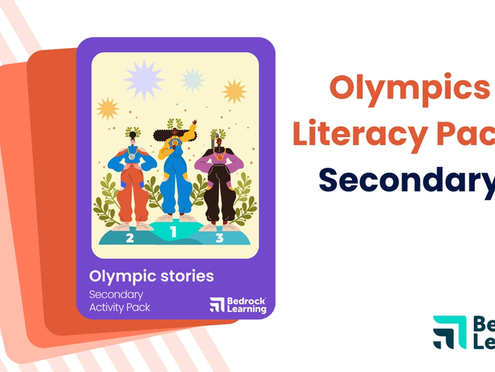84% of the texts we read in adult life are non-fiction, a percentage we see mirrored in the ratio of non-fiction to fiction passages in important school exams.
Over the past 20 years, however, the push to encourage UK children to read independently has left non-fiction at the wayside. Research has widely shown that fiction dominates classroom reading material, especially at the primary level. At home, children are most often read to from fiction texts.
The benefits of fiction notwithstanding, learners need non fiction, too! In fact, evidence suggests non-fiction reading practice develops children’s vocabulary and comprehension strategies more effectively than fiction. So how can we encourage learners to read non-fiction texts, and how will our youngsters benefit?
Non-fiction equips young people for a lifetime of reading
If you think non fiction is too challenging or dull for primary readers, think again. This is a self-fulfilling prophecy – learners exposed exclusively to fiction are less likely to be interested in other types of reading for pleasure.
To unpack meaning in fiction and non-fiction texts, readers need to develop different strategies for reading comprehension, and they need to start both in their primary years. This will prepare them for the rich and diverse variety of texts they’ll encounter in school and throughout a lifetime of reading.
Non-fiction provides tools for independent learning
Learners reading fiction for pleasure learn what to expect from a text when they develop an understanding of plot, character and dialogue – this allows more meaningful engagement with their reading. The structure and features of non-fiction might not be so familiar.
- Point out glossaries, charts, appendices, and tables of contents – a clear explanation of these features will ensure readers can use them to their advantage.
- Try learner-centred inquiry – set a specific research question and provide a selection of texts from which students can source a response. Learners who know they don’t need to just read cover to cover can manage their own reading strategies and source information independently.
- Give children the opportunity to choose their own books, magazines, or articles to encourage them to develop their own interests and enjoy non-fiction. For parents looking to nurture their child’s independent love of learning, this is essential.
Non-fiction develops critical thinking skills
It’s important to ask readers to interpret the purpose of non-fiction texts. As digital citizens, children today will spend their lives bombarded with written information online. It’s critical that learners develop the ability to recognise bias and perspective and to evaluate the difference between fact and fiction.
Whether in written assignments or around the dinner table, if a learner can discuss why an author has written a non-fiction piece, they learn not to take its truth or accuracy for granted.
- Start with a question such as ‘What is the author trying to achieve with this piece of writing?’ Rhetorical reading strategies ask learners to evaluate a text as they’re reading it, encouraging comprehension rather than just decoding.
- Ask learners what they think! Encouraging students to develop and share opinions will help them understand bias and perspective.
Creates essential networks of knowledge
The information learners gain from reading non fiction outside the curriculum bridges gaps in their general knowledge and provides them with the valuable cultural capital they need to understand the world around them. This will inform learners’ progress in subjects across the curriculum.
Reading a short history of the Harlem Renaissance, for example, provides context for studying the poetry of Langston Hughes – scaffolding interpretation and increasing learners’ interest and depth of understanding.
- Work with other departments to compile a whole-school recommended reading list of extracurricular texts.
Learning language for success
We know learners will encounter non-fiction passages throughout the whole gamut of high-stakes exams. Not only will reading non-fiction texts build learners’ academic vocabulary, it equips them with the reading strategies they need for top marks. A broader vocabulary coupled with the ability to source information independently is crucial to students continuing on to higher and further education.
- Identify key terms in a chapter or passage, and ask learners to source their own definitions before they begin to read. Learning terms in context strengthens understanding.
Knowledge is power
Non-fiction reading can empower children to change the world. Articles on ecology can create meaningful interactions with nature, helping children understand the inherent value of natural environments. Learners who have read about the history of war, slavery and inequality can use their cultural knowledge to stand up for people's rights in the modern world.
Of course, non-fiction shouldn’t replace all other genres in a young reader’s diet. Fiction sparks the imagination, exposes students to different experiences and perspectives, and provides a framework to understand the world around them. The language, knowledge, and skills gained from non-fiction reading can work together with fiction to develop young minds – take a look at our strategies for teaching fiction to find out more.
For recommended titles, see the Book Trust’s list of non-fiction books your child will love for younger readers, or for students in Years 9-12, take a look at their non-fiction list for older children.




